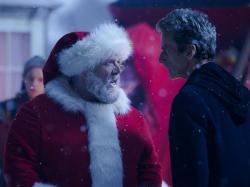
Last Christmas
Written by Steven Moffat
Directed by Paul Wilmshurst
Starring Peter Capaldi, Jenna Coleman, Nick Frost, Dan Starkey, Nathan McMullen, Natalie Gumede
Premiere 25 December, 2014 - BBC One
Ever since the first Christmas special back in 2005, Doctor Who has been a festive fixture, as much a part of the schedule as Morecambe and Wise and Only Fools and Horses once were, and the inevitable Strictly Come Dancing special is now. With all the festive trappings of the last few years, it was surely only a matter of time before Santa Claus himself showed up amidst the snow - but is he real?
In contrast to Robot of Sherwood, which presented a real-life Robin Hood as fact, Steven Moffat wisely leaves it open here. Nick Frost's Santa of course helps save the day, but he's a dream construct....or is he? That tangerine at the end leaves it open. We don't know. Arguably, we should never really know.
Last Christmas could end up going down in history as being one of the oddest things ever to go out on TV on Christmas Day. The tone moves from comedy to full out scares, via off-kilter dream-like moments and a happy ending for nearly everyone. The first ten minutes alone are quite, quite mad - but Moffat knows this, runs with it, and it all pays off over an unusually structured, yet satisfying hour. There are nods to Alien, and The Thing, and even a surprise quote from Die Hard.
Another thing worth pointing out - Doctor Who is now most definitely not for part-timers. Last Christmas acts as a sort of coda to Series Eight, if you've not been paying attention, this isn't for you. While nowhere near as merciless as The Time of the Doctor, context is all, and the fallout from the events of Death in Heaven is dealt with here. Danny's sacrifice and Clara's sense of loss, the Doctor and Clara's lies to each other about Gallifrey and Danny, and the way forward for everyone (except Danny, naturally). Christmas is often a time of change and renewal, and, sometimes, moving on - this is neatly used by Moffat as a metaphor for the Doctor and Clara's relationship.
We open with Clara meeting Santa and his comedy elves on her snow-capped rooftop, before the Doctor sweeps in to whisk her to a polar scientific outpost with a crab problem. The inhabitants of the base are struggling against the Kantrofarri, or, the Dream Crabs. It's Christmas, and the pudding brains are for pudding. The Facehugger-like Dream Crabs, a creation straight out of Alien (Michael Troughton's Professor Albert even explicitly says so, prompting a priceless response from the Doctor) are slowly killing them by inducing a dream state whilst eating their brains. The Crabs are pretty revolting, and their central conceit is grisly. The lumbering 'sleepers' they are attached to are also suitably sinister. Jenna Coleman gets her first true old school scream of terror as a Dream Crab lunges for her. It gets her, but she's unwilling to leave her dream of a perfect Christmas with Danny, with Samuel Anderson giving a strong, sad performance as Dream-Danny, who encourages her to leave him, and by association, to move on.
Moffat's script dines out on the concept of dreams within dreams and nails the skewed logic of a dream state - we're in Inception territory here. Things are ever so slightly off throughout, only the Doctor notices the clues, and even he is up the creek without a paddle until Santa helps everyone wake up, and return to real life, all except the unfortunate Albert, who doesn't make it out.
And what of Santa? Frost is used sparingly, and mostly for comic relief, he has some great moments sparring with Capaldi though. Does he convince as Santa? The hair is white, he looks the part, but there's no getting round the fact that a much younger man is in there. Frost's charisma helps sell it though. Nathan McMullen and Dan Starkey's comedy elves are somewhat less successful, and they don't get much screen time, as if subject to a last minute rewrite when someone upstairs decided they were a bad idea.
Capaldi and Coleman are excellent as always, with Coleman a slightly less dominant presence than in Series Eight, and Capaldi giving perhaps his most Doctorish performance to date, now free of all that ‘Am I a good man’ baggage. Michael Troughton as the unfortunate Professor Albert is good, but doesn’t get a lot to do, but Natalie Gumede as Ashley and in particular Faye Marsay as Shona both shine – Marsay is almost companion material.
Paul Wilmshurst’s direction is superb. He has some slightly dubious CGI to deal with where flying reindeer are involved, but otherwise shines at bringing to life a studio-bound episode that is essentially a dream within a dream within a dream in places. More from him please.
We close with the Doctor and Clara moving past the baggage of the last series, and joyfully running into the TARDIS in search of new adventures. Whether it’ll all end in tears or not, and if this really is the last we see of Danny Pink is up for grabs, but the future looks bright. Roll on 2015, and a very happy Christmas to all of you at home.

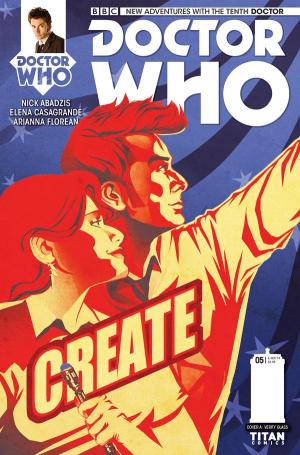
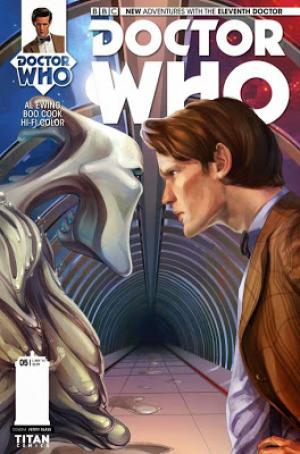 Story - Al Ewing,
Story - Al Ewing,


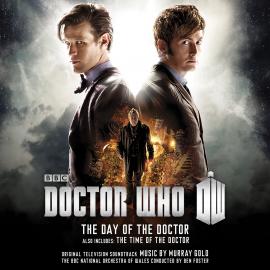

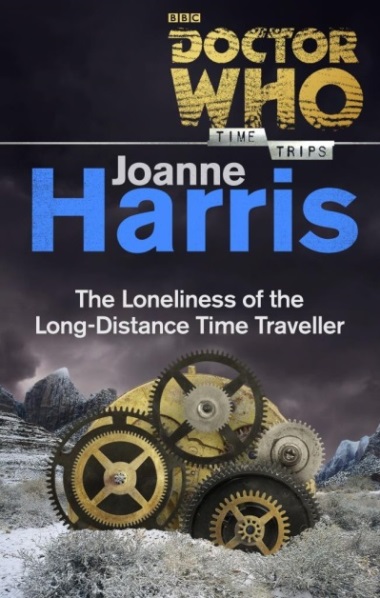 This seventh entry in the Time Trips series of e-books is the work of Joanne Harris, and sees the Third Doctor on the brink of oblivion as he struggles to hold back the deadly radiation he was exposed to on Metebelis Three. The Doctor is the only series regular character to feature, and that is because of his predicament in trying to land back 'home' - i.e. UNIT HQ. After the TARDIS is instead forced down into a Time Paradox ensnared village, with a 'Groundhog Day' style routine questions abound. But soon it is clear that the Doctor must somehow save the day once again - despite his very weak condition.
This seventh entry in the Time Trips series of e-books is the work of Joanne Harris, and sees the Third Doctor on the brink of oblivion as he struggles to hold back the deadly radiation he was exposed to on Metebelis Three. The Doctor is the only series regular character to feature, and that is because of his predicament in trying to land back 'home' - i.e. UNIT HQ. After the TARDIS is instead forced down into a Time Paradox ensnared village, with a 'Groundhog Day' style routine questions abound. But soon it is clear that the Doctor must somehow save the day once again - despite his very weak condition. 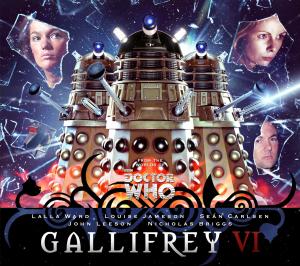

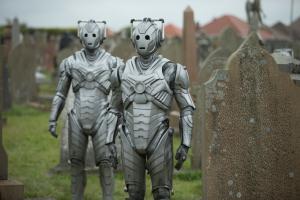 A further big highlight is Clara's brave pretence to her friend that she she has used Missy's techno-bracelet to have the 'normal' Danny restored to her. This scene of two people talking in an unremarkable cafe setting may seem low-key, but is acutely moving. The added dimension of the Doctor also covering his loss by lying that the Master for once told the truth is brilliant. I really doubt that Doctor Twelve will mellow out too much when he still has so much angst and loneliness to process.
A further big highlight is Clara's brave pretence to her friend that she she has used Missy's techno-bracelet to have the 'normal' Danny restored to her. This scene of two people talking in an unremarkable cafe setting may seem low-key, but is acutely moving. The added dimension of the Doctor also covering his loss by lying that the Master for once told the truth is brilliant. I really doubt that Doctor Twelve will mellow out too much when he still has so much angst and loneliness to process.
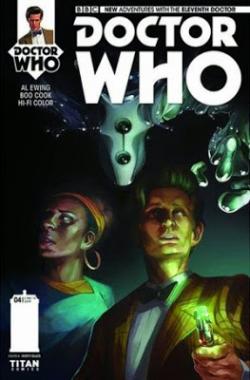
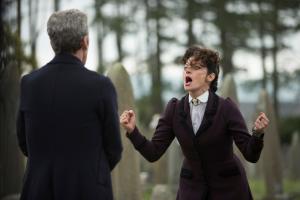

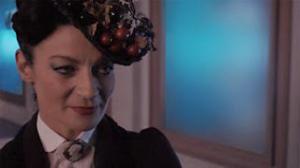
 Circle us on Google+
Circle us on Google+